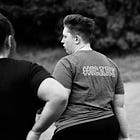UK Coaching Report: Let's dig into the numbers
A recent report/survey into coaching was published by UK Coaching, let's look at some of the headlines
Since 2017, UK Coaching has published regular reports into the experience of coaching and being coached. More than 30,000 adults participated, meaning UK Coaching can track changes and trends over the years.
I want to dig into some of the data, specifically the trends around gender and coaching. There are other noticeable gaps, for example 75% of coaches surveyed were white. However, in this article I want to focus on gender.
Drop in number of female coaches
Unsurprisingly, the number of male coaches outnumbers the number of female coaches. 61% of coaches surveyed are male, 38% are female. This is a significant drop from the last survey: 44% to 38%.
This decrease in the number of female coaches, suggests that they’re either stopping coaching or leaving the sports sector entirely.
Here I ask the obvious question: why would female coaches stop coaching?
I’ve previously written about why there are so few female head coaches within Rugby Union. I mentioned that we can’t increase the number of female coaches and expect them to either stay within a broken system or think that increasing the number of female coaches will fix the system:
“We cannot simply flood the system and expect it to change. We have to change the system.”
According to the report there’s a further disparity between female and male coaches. Male coaches are more likely to hold qualifications within coaching, to enjoy coaching and recommend coaching to others.
One of the most worrying stats is that 55% of female coaches say they are recognised for the contribution they make to helping others compared with 67% of male coaches. Male coaches are also more likely to have access to support.
Looking at these stats plus others around finding time to coach and it’s no wonder that there’s a dropoff in female coaches.
Part of the system fixes has to be within coach education. We need to ensure that there’s a flexibility and variety within coach learning. Formal courses is one way but a diversification of approaches will help meet a wide range of needs.
Cost of education was a barrier that both male and female coaches indentied, so finding creative solutions is key for all of the workforce.
The difference in sports and approach
When looking at how coaches view their role, there was also some gender differences:
“Male coaches are more likely to see their role as competitive:
38% to develop technique
31% to help people achieve their goals
14% to prepare people for events/competitions
13% to develop those who are talented
Female coaches are more likely to see their role as focused on the health and wellbeing of participants:
46% to build confidence/self-esteem
40% to promote health/personal wellbeing
28% to get people active
26% to deliver inclusive/accessible sessions
24% to keep people active”
(Taken from UK Coaching report)
This difference could be due to the different roles male and female coaches may occupy. It could also relate to how female and male coaches see themselves within gender stereotypes and therefore how they percieve the act of coaching.
Another point of difference between male and female coaches is the pay. This stat is overwhelmingly in favour of female coaches, who are more likely to be paid.
This might be because of the difference in pay between different sports. Female coaches are more likely to work within dance and yoga. Male coaches tend to work within team sports and racket games.
The locations of coaching activity may also influence pay. Male coaches are more likely to be found at sports clubs (43% of male coaches compared to 21% of women). Female coaches are often coaching at school sessions, within PE lessons.
It’s an obvious statement, but one that still needs to be said: sport needs to ensure women feel welcome, comfortable and confident when coaching.
If you’re unable to sign up for regular paid subscription, you can still buy me a coffee.




